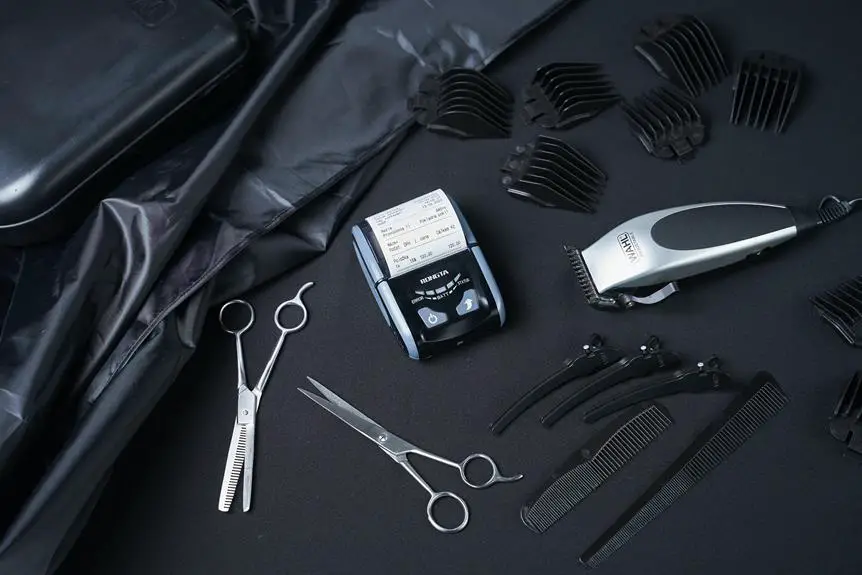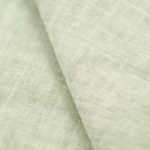Do you ever wonder what makes combed fabric so incredibly luxurious and smooth?
Combed fabric is a textile that has been meticulously treated to create a remarkably soft and refined finish.
This special fabric is achieved through a meticulous process that enhances its strength, luster, and overall quality.
In this brief guide, we'll delve into the origins, characteristics, advantages, and common applications of combed fabric, allowing you to gain a comprehensive understanding of this exceptional textile.
Whether you're a seasoned textile enthusiast or simply curious about the world of fabrics, exploring combed fabric will undoubtedly expand your knowledge and appreciation for this exceptional material.
Key Takeaways
- Combed fabric originated in the Middle Ages and was initially crafted by hand.
- The combing process separates shorter fibers from longer ones, resulting in a smoother and more lustrous yarn.
- Combed fabric is stronger, more durable, and softer than carded fabric.
- It is commonly used in bed linens, towels, and high-quality apparel items for its smoothness, durability, and reduced pilling and fraying properties.
The Origin of Combed Fabric
The origin of combed fabric can be traced back to the Middle Ages when the process of combing wool fibers was developed to create a smoother and more luxurious textile. Initially, the combed fabric was crafted by hand, making it a time-consuming and labor-intensive process. As the demand for finer textiles grew, the development of combed fabric evolved, leading to the use of mechanical combs to streamline and expedite the production process. This marked a significant development in the textile industry, as it allowed for the creation of high-quality fabrics on a larger scale.
Over time, combed fabric gained popularity due to its superior quality and enhanced durability. The evolution of combed fabric resulted in a more refined and uniform texture, making it highly sought after for luxurious garments and textiles. The meticulous development of combed fabric contributed to its widespread popularity, positioning it as a staple in the production of premium clothing and linens. As the techniques for creating combed fabric continued to advance, its reputation for being a top-tier textile only grew, solidifying its place in the world of high-quality fabrics.
The Combing Process
To understand the process of creating combed fabric, you'll need to start by separating the shorter fibers from the longer ones using specialized combs. This process is known as the combing process and is crucial in yarn preparation for spinning. The combs used in this process have fine teeth that can effectively separate the fibers based on their length. By doing so, the shorter fibers, which are more likely to cause pilling and reduce the yarn's fineness and softness, are removed. The remaining longer fibers are then aligned in a parallel manner, resulting in a smoother and more lustrous yarn.
| Advantage | Description |
|---|---|
| Enhanced Yarn Quality | The combing process improves the fineness and softness of the yarn by removing shorter fibers. |
| Reduced Pilling | By eliminating shorter fibers, the likelihood of pilling in the fabric is significantly reduced. |
| Increased Luster | The parallel alignment of longer fibers enhances the fabric's sheen and luster. |
| Consistent Fabric Quality | Combed yarn results in a more uniform fabric with a smoother texture. |
| Improved Durability | The removal of shorter fibers enhances the strength and durability of the yarn and the resulting fabric. |
The combing process is essential for producing high-quality combed fabric, ensuring that the yarn meets the desired standards for fineness, softness, and overall fabric quality.
Characteristics of Combed Fabric
When using combed fabric, you'll notice a distinct smoothness and luster due to the removal of shorter fibers during the combing process. This results in several key characteristics that make combed fabric highly desirable:
- Strength: Combed fabric is stronger and more durable compared to carded fabric due to the removal of shorter fibers during manufacturing.
- Softness: The combing process aligns the fibers parallel to each other, resulting in a smoother and softer feel, making combed fabric more comfortable to wear.
- Color vibrancy: Combed fabric has enhanced color vibrancy and a luxurious appearance, making it ideal for high-quality apparel.
These fabric properties are highly sought after in the textile industry, and the manufacturing process plays a crucial role in achieving these characteristics. By meticulously removing shorter fibers, combed fabric achieves a higher level of quality, making it a preferred choice for finer garments.
Understanding these characteristics can help you appreciate the value of combed fabric and make informed decisions when selecting textiles for your projects.
Advantages of Combed Fabric
When choosing fabric, you want to consider the advantages of combed fabric.
It has smooth, strong fibers that make it durable and comfortable to wear.
Additionally, it reduces pilling and fraying, ensuring that your garments maintain their quality over time.
Smooth, Strong Fibers
Combed fabric's smooth, strong fibers provide several advantages for you. These fibers are meticulously processed to enhance fabric quality, resulting in numerous benefits:
- Enhanced Durability: The strong fibers in combed fabric make it more resistant to wear and tear, ensuring that your garments last longer.
- Superior Smoothness: Combed fabric is smoother to the touch, providing a luxurious feel against your skin and reducing irritation.
- Color Brilliance: The smooth, strong fibers of combed fabric allow for better color absorption, resulting in vibrant and long-lasting colors that won't fade easily.
Choosing combed fabric ensures that your clothing not only feels better but also maintains its quality and appearance over time, making it a wise investment for your wardrobe.
Reduced Pilling and Fraying
By using combed fabric, you can experience reduced pilling and fraying, which adds to the longevity of your clothing. Fabric durability is significantly enhanced with combed fabric due to the process of removing shorter fibers and impurities. This results in a stronger, smoother yarn that's less prone to pilling and fraying compared to carded fabric.
The combing process aligns the fibers in a parallel direction, creating a more compact and even yarn. As a result, combed fabric is less likely to develop pilling, those annoying little balls of fiber that can form on the surface of the fabric.
Additionally, the reduced fraying of combed fabric ensures that your clothing maintains its original appearance for a longer period, ultimately contributing to a more durable and high-quality garment.
Common Applications of Combed Fabric
You can find combed fabric used in a wide range of applications, including bed linens, towels, and high-quality apparel. The production methods and properties of combed fabric make it a popular choice for various purposes.
Here are some common uses of combed fabric:
- Bed Linens: Combed fabric is often used in bed linens due to its smooth, soft, and durable nature. The fabric's reduced pilling and fraying properties make it ideal for creating long-lasting and comfortable bed sheets and pillowcases.
- Towels: Combed fabric is also commonly used in towels because of its ability to absorb moisture while remaining soft to the touch. This makes combed fabric towels luxurious, highly absorbent, and durable, providing a superior drying experience.
- High-Quality Apparel: Many high-quality apparel items, such as dress shirts, blouses, and dresses, are made from combed fabric. The fabric's smooth surface and resistance to pilling make it an excellent choice for creating elegant and long-lasting clothing pieces.
These applications showcase the versatility and desirability of combed fabric in various industries, highlighting its importance in producing high-quality and durable textile products.
Maintenance and Care of Combed Fabric
Taking care of your combed fabric is essential to maintain its quality and appearance. Proper washing techniques and ironing can ensure that your combed fabric stays in good condition for a long time.
Let's explore the best practices for washing and ironing combed fabric to keep it looking its best.
Washing Combed Fabric
To properly maintain and care for combed fabric, it's essential to follow specific washing instructions. When washing combed fabric, it's important to use a gentle cycle to avoid damaging the fibers. Additionally, follow the drying instructions carefully to prevent shrinkage or distortion of the fabric. Here are some key tips to keep in mind:
- Use a gentle cycle to wash combed fabric
- Follow the specific drying instructions for the fabric
- Avoid using high heat during the drying process
Following these washing guidelines will help preserve the quality and longevity of combed fabric, ensuring that it retains its softness and durability after each wash.
Ironing Combed Fabric
When ironing combed fabric, set the iron to a low heat setting to avoid damaging the fibers.
It's important to use proper ironing techniques to maintain the fabric's quality. Start by ironing the fabric while it's still slightly damp for better results.
Place a pressing cloth over the fabric to prevent direct contact with the iron. Gently press the iron onto the fabric, moving it in a back and forth motion.
Avoid using a steam iron as it can leave water spots on the fabric. Always iron the fabric inside out to prevent any shine or damage to the outer surface.
Following these fabric care suggestions will help you maintain the integrity of your combed fabric while keeping it wrinkle-free.
Comparing Combed Fabric With Other Fabrics
How does combed fabric compare to other fabrics in terms of durability and softness?
Combed fabric offers several advantages over other fabrics when it comes to durability and softness.
- Durability: Combed fabric is more durable than regular cotton fabric due to the meticulous combing process that removes shorter fibers and impurities. This results in a stronger and more compact yarn that's less prone to pilling and fraying, making combed fabric an excellent choice for long-lasting garments and linens.
- Softness: Compared to carded fabric, combed fabric is noticeably softer and smoother to the touch. The combing process aligns and straightens the fibers, resulting in a finer and more uniform yarn. This characteristic makes combed fabric ideal for items that come into direct contact with the skin, providing a luxurious and comfortable feel.
- Versatility: Combed fabric's combination of durability and softness makes it a versatile choice for a wide range of applications, from everyday clothing to high-quality bed linens and towels. Its ability to maintain its softness and integrity over time sets it apart from many other fabrics.
When considering fabrics, combed fabric stands out for its exceptional durability and softness, making it a preferred choice for various textile products.
Frequently Asked Questions
Can Combed Fabric Be Used for Outdoor or Heavy-Duty Applications?
Yes, combed fabric can be used for outdoor or heavy-duty applications. Its durability and strength make it suitable for withstanding harsh outdoor conditions. It provides comfort and resilience, making it a great choice for outdoor use.
Are There Any Environmental Concerns or Sustainability Issues Related to the Production of Combed Fabric?
When considering combed fabric, it's important to assess the environmental impact. Many manufacturers are implementing sustainable practices to minimize water and energy usage, reduce waste, and use eco-friendly materials, addressing sustainability concerns.
Is Combed Fabric Suitable for People With Sensitive Skin or Allergies?
Yes, combed fabric is suitable for people with sensitive skin or allergies. Its fabric softness and removal of short fibers make it less likely to cause irritation, making it a suitable choice for those with skin sensitivity and allergies.
How Does the Cost of Combed Fabric Compare to Other Types of Fabrics?
Combed fabric's cost compares favorably to other types, considering its durability. It may be pricier upfront, but its longevity and quality make it a worthwhile investment. Research and compare to make an informed decision.
Can Combed Fabric Be Dyed or Printed With Patterns and Designs?
Yes, combed fabric can be dyed or printed with various methods like reactive, pigment, or disperse dyeing. It retains breathability and durability, making it suitable for vibrant patterns and designs without compromising quality.
- How Does Ring Spun Cotton Affect Garment Fit and Shape Retention? - August 13, 2024
- What Are the Challenges in Producing Ring Spun Cotton? - August 13, 2024
- Is Ring Spun Cotton Suitable for Plus-Size Clothing? - August 13, 2024






